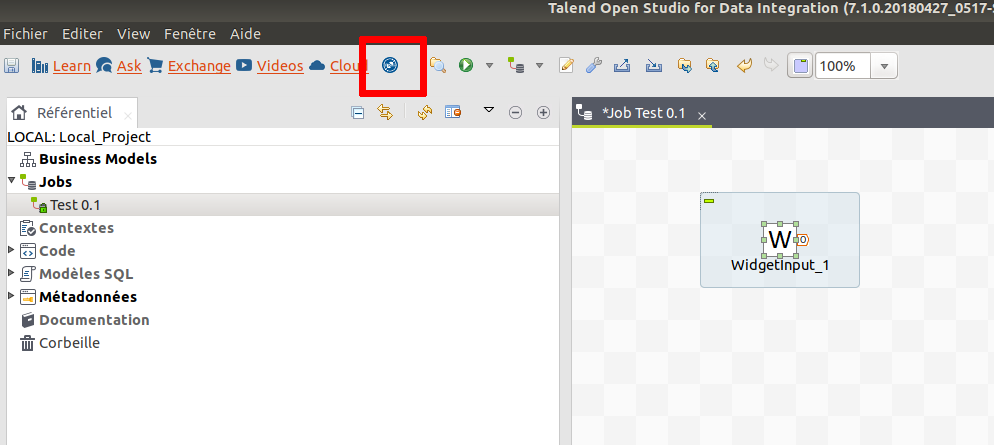Integrating components into Talend Studio
Before integrating your components into the Studio, learn how to build and deploy them using Maven or Gradle Talend Component Kit plugins.
Design
The Studio integration relies on the Component Server (see Web for more details).
When the plugin is deployed, it starts a local server that the Studio uses to gather data about the components.
Installing the components
-
Copy
org.talend.sdk.component.studio-integration.jarin the$STUDIO_HOME/pluginsdirectory of the Studio. -
Restart the Studio.
-
Make sure that the
component-serverdependencies andcommons-cli1.4 are in the Studio Maven repository.
If you install any other component, ensure its dependencies are in the repository as well.
you can set the maven.repository value to global in $STUDIO_HOME/configuration/config.ini to reuse your local Maven repository.
|
Configuring the components
The configuration is done in the $STUDIO_HOME/configuration/config.ini file.
Name |
Description |
Default |
component.environment |
Enables the developer mode when set to |
- |
component.debounce.timeout |
Specifies the timeout (in milliseconds) before calling listeners in components Text fields |
750 |
component.kit.skip |
If set to |
false |
component.java.arguments |
Component server additional options |
- |
component.java.m2 |
Maven repository that the server uses to resolve components |
Defaults to the global Studio configuration |
component.java.coordinates |
A list of comma-separated GAV (groupId:artifactId:version) of components to register |
- |
component.java.registry |
A properties file with values matching component GAV (groupId:artifactId:version) registered at startup |
- |
component.java.port |
Sets the port to use for the server |
random |
components.server.beam.active |
Active, if set to true, beam support (Experimental). It requires beam sdk java core dependencies to be available. |
false |
component.server.jul.forceConsole |
Adds a console handler to JUL to see logs in the console. This can be helpful in development because the formatting is clearer than the OSGi one in It uses the |
false |
To activate the plugin and be able to deploy your component, set component.kit.skip to true.
|
A common developer configuration/config.ini file uses the following specific entries:
# use local .m2 instead of embedded studio one
maven.repository = global
# load these component modules
component.java.coordinates = \
group1:artifact1:0.0.1,\
group2:artifact2:0.2.1
# during development, see developer model part
component.environment = dev
# log into the console the component interactions - optional
component.server.jul.forceConsole = true
java.util.logging.SimpleFormatter.format = [%4$s] %5$s%6$s%nRandom port when running concurrent studio instances
If you run multiple Studio instances automatically in parallel, you can run into some issues with the random port computation. For example on a CI platform. For that purpose, you can create the $HOME/.talend/locks/org.talend.sdk.component.studio-integration.lock file.
Then, when a server starts, it acquires a lock on that file and prevents another server to get a port until it is started. It ensures that you can’t have two concurrent processes getting the same port allocated.
However, it is highly unlikely to happen on a desktop. In that case, forcing a different value through component.java.port in your config.ini file is a better solution for local installations.
Developer mode
The developer mode adds a Talend Component Kit button in the main toolbar:

When clicking this button, all components developed with the Talend Component Kit framework are reloaded. The cache is invalidated and the components refreshed.
| You still need to add and remove the components to see the changes. |
The developer mode can be very useful to see some updates in components without having to restart entirely the Studio.